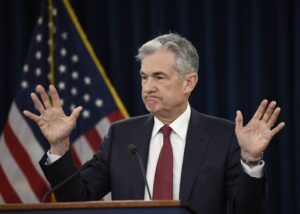Future Fed Rate Cuts ‘Far’ From Certain After a Divided Meeting
A Hawkish Twist to a Dovish Decision
While the cut extends the Fed’s pivot toward cushioning a slowing jobs market, Powell underscored rising internal debate—a “growing chorus” skeptical of further easing with inflation still hovering near ~3% and tariff-related price pressures complicating the outlook. The policy vote was 10–2: Kansas City Fed’s Jeffrey Schmid preferred no change; Governor Stephen Miran dissented for a larger 50 bp move.
QT Ends for Treasurys; MBS Runoff Continues
Officials also set a Dec. 1 end date for the runoff of Treasurys, citing mounting signs that banking-system reserves are shifting from “abundant” toward merely “ample.” The Fed will continue MBS runoff but replace maturities with T-bills to avoid further draining term liquidity. The move aims to sidestep a repeat of the Sept. 2019 funding squeeze and responds to heavier use of backstop facilities that signal tighter money markets.
Data Blackout Raises the Bar for December
The ongoing government shutdown has delayed key labor and inflation reports, leaving officials in a data blackout. Powell said limited visibility could argue for caution on additional easing. September’s projections (the “dots”) narrowly favored two or more cuts in 2025 after September—but a sizeable minority opposed more moves without clearer labor-market deterioration.
How to Read the Reaction Function
- Labor first: A sharper slowdown in jobs would push the Fed toward another cut; absent that, inertia favors a pause.
- Inflation watchers: Any re-acceleration, especially from trade/tariff passthrough, strengthens the no-cut camp.
- Financial conditions: New highs in equities and easier credit could argue against piling on more accommodation.
- Liquidity plumbing: Ending Treasury QT should ease reserve frictions and reduce tail risk in money markets.
Market Implications
- Rates: Front-end yields may stay sticky higher as December odds reprice; curve steepening risk if growth holds.
- Credit: Funding relief from ending Treasury QT is a modest positive for banks and short-term credit.
- Equities: Growth/AI segments benefit from lower discount rates, but a more conditional Fed raises event risk into December.
- USD: Mixed—less QT and a cautious Fed can pressure the dollar, but higher front-end yields support it near-term.
- Mortgages: Continued MBS runoff keeps spread pressure elevated even as reserve conditions improve.

